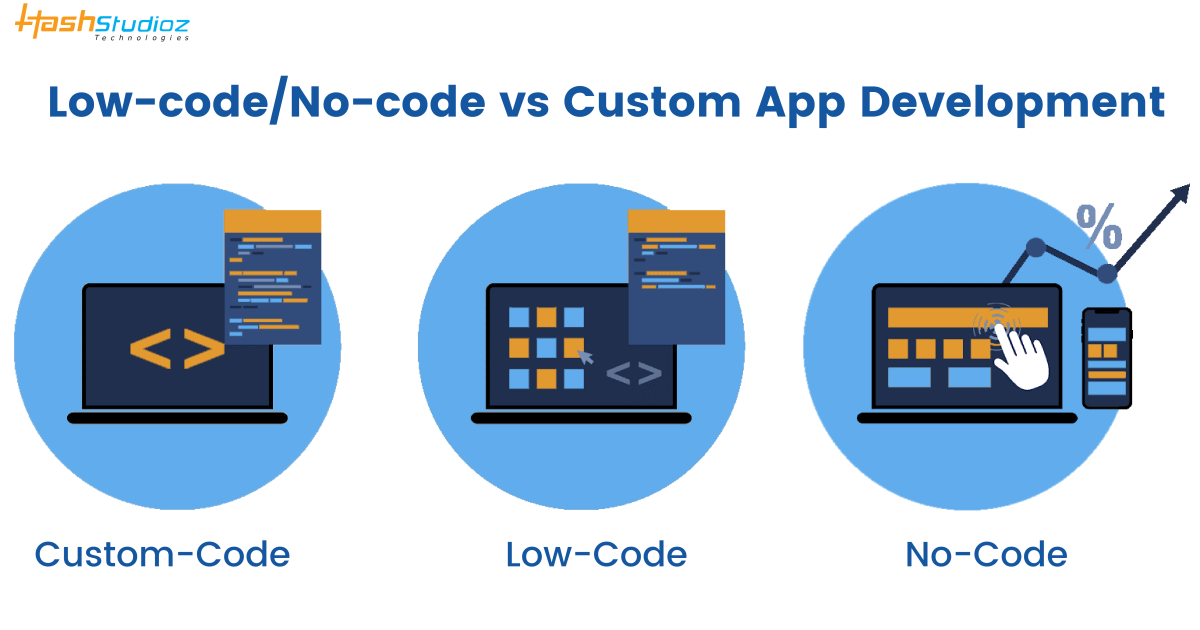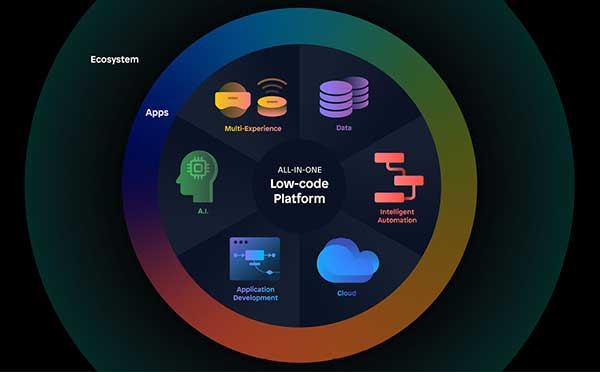Good Suggestions For Choosing Low-code platforms for application development
Good Suggestions For Choosing Low-code platforms for application development
Blog Article
Benefits Of Developing Applications Using Low-Code In Terms Of Accessibility For Non-Developers
The following main factors make low-code development available to non-developers.
Drag-and-Drop Builders : Low-code platforms have drag-and-drop interfaces, which allow people who are not developers, and without the need to write code, to develop visual applications. This makes it easier for people with no technical expertise to be involved in the process of development.
WYSIWYG: WYSIWYG editors are "What you See is What you Get" editors that permit users to design workflows and interfaces that are similar to the final product. It makes it much simpler to understand and use.
Simple Logic and Workflow:
Visual Workflow Design: Users are able to quickly design business processes and application logic by using diagrams, flowcharts and models. They are much easier to work with than traditional coding.
Pre-built Logic components Low-code platforms contain logic components pre-built (e.g. conditional statements and loops), which can be easily customized and without the need for complex coding.
Reusable Components and Templates
Library of pre-built templates: A lot of Low-Code platforms provide templates that are based off of common application types. Non-developers are able to customize these templates if needed.
Reusable widgets and Modules Utilizing reusable widgets or modules users can streamline the creation process, by reducing the requirement for detailed technical know-how.
Guided Development & Tutorials
Step-by step guides Platforms provide tutorials, on-screen tips, and development guides to assist developers who are not experts in developing applications.
Interactive Tutorials Interactive tutorials and hands-on ones let users learn by doing. They gain confidence by using the platform.
Integration with Existing Tools:
Easy Integration - Low-code platforms can be easily integrated with existing business tools and systems (e.g. ERP, CRM) which gives even non-developers to create apps that fit into their workflows.
APIs/Connectors: These APIs/Connectors make it easy for non-developers connect their applications to external services.
Collaboration Features:
Team Collaboration: Features such as real-time collaborative workspaces, as well as shared workspaces make it possible for non-developers to work effectively with business analysts, developers and other key stakeholders.
Role-based Access Control: You can give non-developers certain roles that correspond to the appropriate access level so that they are able to participate in the development process without hindering security or the functionality.
Automated Testing and Debugging
Low-code platforms come with tools to test and debug that are built-in. They automate this procedure, making it much easy for non-developers to make sure their apps run.
Error Highlighting: When issues arise, the platform highlights problems and provides solutions, guiding users through troubleshooting.
The capacity of low-code software to facilitate development for those who are not developers is its main benefit. Low-code platforms offer intuitive visual tools, guided experiences and enable business users actively participate in creating updates, maintaining and enhancing applications. Have a look at the most popular Low-code Platform for application development for blog info including develop cross platform mobile app, sso azure, application modernization, app platforms, azure sql, azure sql databases, lowcode no code, driver jdbc, build a docker container, stored sql procedures and more.
Scalability And Flexibility Are The Two Advantages Of Low-Code Application Development
Low-code development of applications offers a variety of advantages in terms of adaptability and scalability, which are vital to build applications that can adapt to business demands and change with the demands of business. These are the most significant benefits:
Cloud-Based Deployment. A lot of low-code platforms offer a cloud-based deployment that allows them to scale applications seamlessly by using cloud infrastructure. This allows businesses handle increased demand without worrying about managing servers.
Auto-Scaling: The auto-scaling function allows you to automatically adjust resources in accordance with demand. This ensures the same performance even during peak hours and without manual intervention.
Flexible Architecture:
Modular Design: Low-code platforms support modular application design, where components can be created independently test, scaled, and then redesigned. This is a fantastic way to increase flexibility. It is also easy to update and expand parts of an application without having the entire application affected.
Microservices integration: The support offered by the microservices architecture enables applications to be designed as a collection of loosely linked services. This improves capacity and flexibility.
Customizable Solution:
Extensibility: Low code platforms typically allow customization of scripts and codes which lets developers expand the capabilities of apps beyond that available out-of the-box. This allows businesses to satisfy their own unique requirements.
Third-Party Integrations: Companies can add additional functionality and features into their apps by integrating with APIs and third-party providers.
Agile Development and Deployment:
Continuous Deployment and Delivery Low code platforms support agile methods, enabling continuous deployment and integration (CI/CD). This allows for the rapid release of new features and updates, while ensuring that the application can be updated quickly in response to user feedback and market changes.
Iterative Development - The low-code model permits applications to be enhanced and scaled up incrementally which reduces risk and allows for a more controlled expansion.
Resource Optimization
Resource management that is efficient Low-code platforms optimize resources by offering instruments to monitor and manage the performance of the application. This ensures that resources are utilized efficiently and scaled up or back down depending on actual requirements.
Load Balancing: The integrated load balancing feature divides the workload evenly among servers. This increases the application's capacity to handle the demands of high demand, and guarantees consistent performance.
Global Reach
Multi-Region: Low-code platform deployments are often available across multiple regions, allowing businesses to provide users with low latency access to all users. This is important, especially when it comes to applications that have global users.
Localization Support for localization built in, which allows applications to be easily adjusted for various languages or regional needs. This increases flexibility for various markets.
Maintenance and updates
Simple Maintenance: The aesthetic and modular design of low-code software simplify maintenance tasks which allows updates and bug fixes to be made quickly, without lengthy downtime.
Version Control Systems for Version Control help manage changes and rollbacks to ensure that updates are deployed safely and previous versions are restored when required.
Cost Efficiency:
Low Development Costs: By decreasing the amount of programming needed, low-code platforms can reduce development costs. This allows you to expand applications without having to increase development efforts and expenses.
Pay-As-You Go Models - Many low-code applications have flexible pricing structures, like pay-as-you go that is based on the actual usage, growth, as well as financial flexibility.
Overall, low-code app development gives businesses the flexibility and capacity they require to create robust and adaptable applications. These platforms enable rapid adjustments to the demands of changing markets and efficient utilization of resources and constant advancement. Applications can evolve and change with the business. Have a look at the top rated Legacy application modernization with Low-code for website tips including low code development platforms, develop web app, app modernization, application modernization, application modernization, mobile development platforms, develop web application, build a docker container, azure sql server, cross platform mobile development and more.
Benefits Of Low-Code Application Development With Specifications And Customization
Low-code applications offer an approach that is balanced and offers significant advantages in terms of dealing with limitations and permitting modification. Here are some benefits:
Overcoming Complexity Barriers
Simplified development: Low code platforms make it easier to develop by offering templates and pre-built components. This allows faster application deployment, even for more complex ones.
Guided Workflows A lot of platforms provide wizards and workflows that guide developers through complicated processes. This can help reduce the chance of errors and ensures the consistency of.
Scalability Solutions
Scalability integrated into Low-Code platforms: Low-code platforms typically have features that enable scaling architecture. This allows applications to handle greater loads without massive re-development.
Performance Monitoring Performance Monitoring: Tools for monitoring performance and optimization tools ensure that applications are as efficient as they can be, no matter the size of their application.
Security and Compliance
Integrated security features Low-code platform comes with built-in measures of security, such as encryption. Access control based on role and automated compliance checks to address the most prevalent security issues.
Regular Updates: Platforms regularly update their security protocols and conformity measures, making sure that applications remain secure against the latest threats.
Customization Capabilities:
Extensibility:
Custom Code Integration : Low-code platforms typically allow for the integration of customized codes (e.g. JavaScript, Python), which allows developers to extend the functionalities beyond the standard offerings.
Custom Modules and plugins: Developers have the option of designing custom modules or plugins in order to customize specific functionality to fit unique business needs.
APIs and Integration
API Support - Comprehensive support of APIs facilitates seamless integration with other services and systems, and allows for extensive customisation.
Third-Party Services: Low code platforms provide connectors that are built for popular third-party services. This makes it easier to modify and integrate apps.
Flexible UX/UI:
Customizable user interfaces: Developers are able to modify and design user interfaces to satisfy specific branding requirements and user-friendliness requirements, creating the user with a customized experience.
Responsive design: The capacity to customize applications for different devices and screens is built-in.
Business Logic Customization
Visual Workflow Designers: These graphic tools can be used to customize and create workflows and business logic, allowing developers to design complex processes that are tailored for their needs.
Conditional Logic and Scripting: Platforms enable the use of conditional logic as well as custom scripting that can handle certain business rules and scenarios.
Data Management:
Custom Data Modelling: Those who develop the models create custom models that meet specific requirements for the particular application. They can customize processing of data according to a company's specifications.
Advanced Data Processing: Integration of advanced tools and capabilities to process data permits customizations to the way data is analyzed in an application.
How do you balance personalisation and limitations:
Frameworks & Standards
Low-code platforms promote industry standards and best practices, resulting in high-quality applications that are robust and secure.
Governance Frameworks. Inbuilt frameworks for governance guarantee that modifications will not compromise the security, integrity, or compliance of the software.
Iterative Development and Feedback:
Rapid Prototyping. The capability of quickly prototyping and testing customizations lets developers tweak the application based on user feedback. This helps refine the application to better satisfy the needs of users.
Continuous Improvement: Platforms that use low-code enable continuous improvement, allowing customization and enhancement as the business requirements change.
User Empowerment
Enabling Citizen Developers to Develop: By enabling non-developers to customize their applications using intuitive user interfaces, platforms that do not require code increase the pool of contributors who can improve and customize applications.
Training and Support - Many platforms provide extensive training and support for users to customize their applications, while not compromising its stability or performance.
Overall, low-code application development offers a robust framework to overcome limitations as well as a wealth of opportunities to customize. This allows companies to create and maintain applications that are both functional and adapted to meet specific business requirements. While maintaining high quality, security as well as scalability and standards.